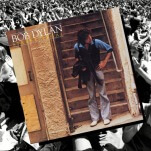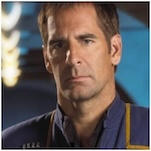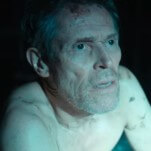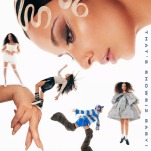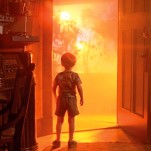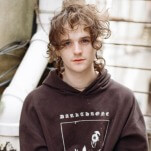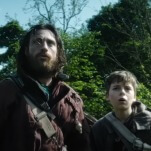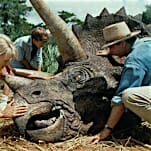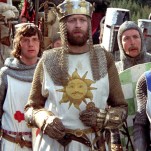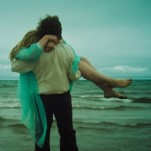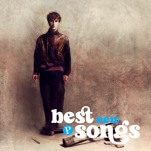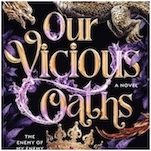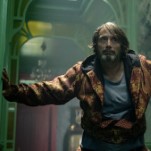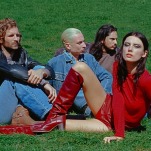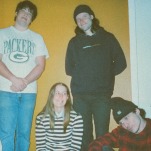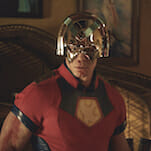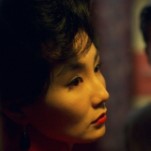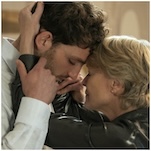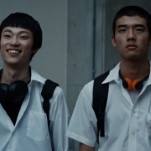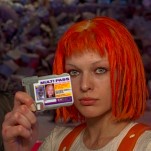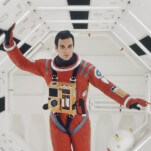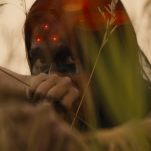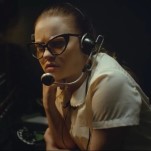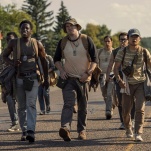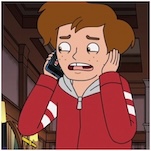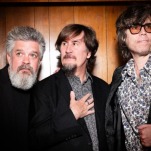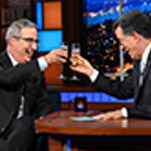The 20 Best Movies on Crackle (April 2025)
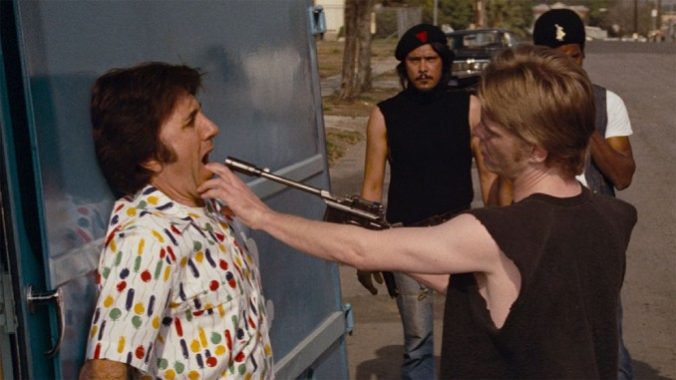
No longer just the home for Comedians in Cars Getting Coffee, Crackle has seen its library of great, free movies go through the hands of indie owners as Grouper, then through Sony Pictures as Crackle, then finally to Chicken Soup for the Soul Entertainment of all places. But what hasn’t changed is what’s on offer: Free movies, supported by ad breaks rather than streaming subscription fees. Crackle’s one of the oldest and most established of the commercial-supported streamers, which means you can rely on it sticking around and having more than the Asylum Sharknado movies on offer. Ranging from classic B movies to ’80s horror to newer indies (and the odd, unexpected blockbuster or international hit in between), Crackle has plenty of films for fans of all genres. But how hard do you have to sell “free”?
Here are the 20 best movies on Crackle:
1. Short Term 12
Year: 2013
Director: Destin Daniel Cretton
Stars: Brie Larson, John Gallagher Jr., Kaitlyn Dever, Rami Malek, Alex Calloway, Lakeith Stanfield
Rating: R
As it progresses, Short Term 12 remains rigorously structured in terms of plot; yet it never feels calculated. In fact, the film serves as a fine example of how invisible screenwriting can be. By allowing his characters’ irrational emotions to influence events and instigate key turning points, Cretton capably masks the film’s finely calibrated story mechanics. And while everything seemingly comes to a head during a key crisis, it’s only fitting that the story ends with a denouement that bookends its opening. Cretton’s clear-eyed film is far too honest to try and convince us that there’s been any sort of profound change for Grace or anyone else. Instead, it’s content to serve as a potent reminder that tentative first steps can be every bit as narratively compelling as great leaps of faith. —Curtis Woloschuk
2. Chopping Mall
Year: 1986
Director: Jim Wynorski
Stars: Kelli Maroney, Tony O’Dell, John Terlesky, Suzee Slater, Barbara Crampton, Russell Todd
Rating: R
Calling Chopping Mall the best film by director Jim Wynorski isn’t saying much—at all—but it remains a minor ’80s horror/sci-fi classic despite that. The premise is irresistible pulp, dressed in ’80s neon teen fashion—a group of kids hide out in the mall past closing time so they can party (and score) in one of the furniture stores overnight. Little do they know, however, that the mall recently unveiled a new fleet of deadly efficient security robots that are, shall we say, more than a little twitchy. The cast gives us Kelli Maroney, who also appears in the similarly teen-inflected Night of the Comet, and Roger Corman regular Dick Miller as the janitor, once again playing his signature role: “Dawn of the Dead, except with much more gallows humor. Today, genre fans are likely to fondly remember Chopping Mall for the fact that it contains one of the greatest single practical effects of the era; the graphic explosion of Suzee Slater’s head, followed by the robot’s wry line of “Thank you, have a nice day.” You’ve gotta love it. —Jim Vorel
3. Sophie’s Choice
Year: 1982
Director: Alan J. Pakula
Stars: Meryl Streep, Kevin Kline, Peter MacNicol
Rating: R
William Styron’s soul-shattering story of an ethereally beautiful concentration camp survivor is brought to life on screen by Meryl Streep. Streep learned to speak French with a Polish accent in order to preserve the integrity of one of the most important literary characters of the modern age. Alan Pakula allows Streep to do what she does best: She dons the character like a perfectly fitted coat. The result is one of the greatest film performances of all time. Sophie’s Choice is the embodiment of the horror of war and its aftermath.—Joan Radell
4. Das Cabinet des Dr. Caligari (The Cabinet of Dr. Caligari)
Year: 1920
Director: Robert Wiene
The Cabinet of Dr. Caligari brought German Expressionist film to full view with art direction that’s every bit as dark and twisted as the story it tells. Set in an environment full of askew streets, warped roofs and staircases that travel at impossible angles, no film has the same spooky feel as this tale of a mysterious doctor and the sleepwalker he uses as a murder weapon. While the film’s influence is immeasurable, its visuals were more a catalyst for ideas than a target of direct imitation. This is partly because the look is so out there, and partly because the graphical set design could have lent itself more to the film medium—the painted-on shadows and canvas backdrops can make it seem as if the characters are walking on plywood theater stages rather than through a demented cityscape.
5. His Girl Friday
Year: 1940
Director: Howard Hawks
Stars: Cary Grant, Rosalind Russell, Ralph Bellamy
Rating: PG
Special effects have become so sophisticated that many of us have probably forgotten how much pure amazement you can wreak with a great story and a script that doesn’t let up for one second. This amazing, dizzyingly paced screwball comedy by Howard Hawks stars Cary Grant and Rosalind Russell, and takes us back into two of the decade’s hallmark preoccupations: The “remarriage comedy” and the intrigue and obsessiveness of the newspaper world. The minute Russell’s Lindy Johnson stalks into the newspaper office run by her ex-husband Walter Burns (Grant), you know it’s to tell him she’s getting remarried and leaving journalism to raise a family, and you know that’s not how it’s going to end. No high-suspense mystery here. What puts you on the edge of your seat in this film is how you get there. Hilariously acted and expertly filmed, His Girl Friday derives much of its comedic impact from the incredibly clever and lightning-fast banter of the characters. Don’t even think about checking your phone while you’re watching this. In fact, try to blink as little as possible. —Amy Glynn
6. D.O.A.
Year: 1950
Director: Rudolf Maté
Stars: Edmond O’Brien, Pamela Britton
Rating: PG-13
In one of the most intriguing opening scenes in film history, D.O.A. commences with a lengthy tracking shot of a man as he stumbles into the police office to make an unusual request—he wants to report his own murder. This opening image just about sums up D.O.A., a brisk yet exhilarating noir thriller with one hell of a high-concept. After being administered a deadly poison, the main character has only a few days to discover who dosed him and why. What follows is a glorious mix of high-stakes melodrama and entertaining sleaze all compacted into a concise hour-and-twenty minute running time. —M.R.
7. Gaslight
Year: 1940
Director: Thorold Dickinson
Stars: Anton Walbrook, Diana Wynyard
Rating: NR
It was always a fantastic film; a tale of sadistic psychological torture, murder and greed. But today George Cukor’s suspense-gem has also attained mandatory-viewing status because it is the source text for the term “gaslighting.” The word has been swept into public discourse and mass misuse and misunderstanding. What gaslighting is (and isn’t) is defined by this film. You arguably need to see it before you can use that word and understand what you’re saying. But that alone wouldn’t be just cause in a bad movie. This is not a bad movie; in fact it’s a treasure. Mysterious, rich in feeling, deliciously creepy, and with jewel-tone supporting performances by Angela Lansbury and Joseph Cotten, it was a great psychological thriller in its day and it remains one now. So, yeah-come for the psychopathology lesson, but stay for the stunning “God’s-eye” style direction by Cuckor (no unreliable narrators here!), and wonderful performances by Ingrid Bergman and Charles Boyer as a traumatized woman and a sociopath determined to drive her out of her mind. —A.G.
8. Godzilla
Year: 1954
Director: Ishiro Honda
Stars: Sachio Sakai, Takashi Shimura, Momoko Kochi, Akira Takarada
Rating: NR
Early in Godzilla, before the monster is even glimpsed off the shore of the island of Odo, a local fisherman tells visiting reporter Hagiwara (Sachio Sakai) about the play they’re watching, describing it as the last remaining vestige of the ancient “exorcism” his people once practiced. Hagiwara watches the actors “sacrifice” a young girl to the calamitous sea creature to satiate its hunger and cajole it into leaving some fish for the people to enjoy–at least until the next sacrifice. Ishiro Hondo’s smash hit monster movie—the first of its kind in Japan, the most expensive movie ever made in the country at the time, not even a decade after the atomic bombing of Hiroshima and Nagasaki—is, after 20-something sequels over three times as many years, a surprisingly elegiac exorcism of its own, a reminder of one nation’s continuing trauma during a time when the rest of the world jonesed to forget. As J Hoberman describes in his essay for the film’s Criterion release, much of Honda’s disaster imagery is “coded in naturalism,” a verite-like glimpse of the harrowing destruction wrought by the beast but indistinguishable from the aftermath of the Americans’ attacks in 1945, especially when the U.S. and Russia, among other powers, were testing H-bombs in the Pacific in the early 1950s, bathing the Japanese in even more radiation than that in which they’d already been saturated. And yet, Godzilla is a sci-fi flick, replete with a “mad” scientist in an eye patch and a human in a rubber dinosaur suit flipping over model bridges. That Honda handles such goofiness with an unrelentingly poetic hand, purging his nation’s psychological grief in broadly intimate volleys, is nothing short of astounding. Shots of Godzilla trudging through thick smoke, spotlights highlighting his gaping maw as the Japanese military’s weapons do nothing but shock the dark with beautiful chiaroscuro, have been rarely matched in films of its ilk (and in the director’s own legion of sequels); Honda saw gods and monsters and, with the world entering a new age of technological doom, found no difference between the two. —Dom Sinacola
9. Night of the Living Dead
Year: 1968
Director: George A. Romero
Stars: Duane Jones, Judith O’Dea
Rating: NR
What more can be said of Night of the Living Dead? It’s pretty obviously the most important zombie film ever made, and hugely influential as an independent film as well. George Romero’s cheap but momentous movie was a quantum leap forward in what the word “zombie” meant in pop culture, despite the fact that the word “zombie” is never actually uttered in it. More importantly, it established all of the genre rules: Zombies are reanimated corpses. Zombies are compelled to eat the flesh of the living. Zombies are unthinking, tireless and impervious to injury. The only way to kill a zombie is to destroy the brain. Those rules essentially categorize every single zombie movie from here on out–either the film features “Romero-style zombies,” or it tweaks with the formula and is ultimately noted for how it differs from the Romero standard. It’s essentially the horror equivalent of what Tolkien did for the idea of high fantasy “races.” After The Lord of the Rings, it became nearly impossible to write contrarian concepts of what elves, dwarves or orcs might be like. Romero’s impact on zombies is of that exact same caliber. There hasn’t been a zombie movie made in the last 47 years that hasn’t been influenced by it in some way, and you can barely hold a conversation on anything zombie-related if you haven’t seen it–so go out and watch it, if you haven’t. The film still holds up well, especially in its moody cinematography and stark, black-and-white images of zombie arms reaching through the windows of a rural farmhouse. Oh, and by the way–NOTLD is public domain, so don’t get tricked into buying it on a shoddy DVD. —Jim Vorel
10. Nosferatu the Vampyre
Year: 1979
Director: Werner Herzog
Stars: Klaus Kinski, Isabelle Adjani, Bruno Ganz, Roland Topor, Walter Ladengast
Rating: PG
Werner Herzog recreates the cornerstone of vampire cinema (and German expressionist filmmaking, for that matter) through an ever-mounting nightmare of unsettling, disjointed vignettes. Which isn’t anything new for the German director, but his methods and sensibility do lend themselves naturally to the language of phantasmagoria, as he tells a well-known story via one subconscious-upending image after another. As in any Herzog film, the story is never intended to hold together flawlessly—only barely logically—but to imprint indelibly upon the insides of the viewers’ eyelids the stark silhouette of evil borne absurdly from the primeval fear in all of us. That Klaus Kinski also plays Count Dracula means that madness bristles at the edge of every manicured line of chiaroscuro: Nosferatu revels in the beauty of horror. In fact, Roger Ebert said, “Here is a film that does honor to the seriousness of vampires. No, I don’t believe in them. But if they were real, here is how they must look.” —Dom Sinacola
11. The Phantom of the Opera
Year: 1925
Director: Rupert Julian
Stars: Lon Chaney, Mary Philbin
Rating: NR
Before Dracula and the official birth of Universal Horror, there was Phantom of the Opera. (By the way: It sucks that none of the major streamers, including Netflix and Shudder, have the rights to show all of the classic Universal Monster series. I want to be able to watch Son of Frankenstein or The Wolf Man streaming on demand some day, guys! Get those licensing deals in place!) Regardless, it’s nice that Shudder has at least one of these old classics, on account of it being in the public domain. This is the original version of Phantom, starring Lon Chaney Sr., the “Man of a Thousand Faces.” The pace is slow, the acting style on display is rather alien to watch today— overdramatic holdovers from the vaudeville era—and you know how the classic story goes, but man: Chaney’s face. t’s one of the truly iconic faces of horror, right alongside Boris Karloff, Bela Lugosi and Chaney’s own son, Lon Chaney Jr., who would go on to play The Wolf Man. Phantom of the Opera is indispensable for Chaney’s self-devised makeup, which reportedly had theater patrons fainting in the aisles in 1925. —Jim Vorel
12. Sleepaway Camp
Year: 1983
Director: Robert Hiltzik
Stars: Felissa Rose, Mike Kellin, Katherin Kamhi, Paul DeAngelo, Jonathan Tiersten
Rating: R
Of all the camp-based Friday the 13th rip-offs, Sleepaway Camp is probably the best one that isn’t The Burning. Our main character is Angela, a troubled girl who absolutely everyone picks on for no good reason. Seriously—it’s one of those ’80s era movies with a main character who is an “outsider” constantly harassed by dozens of people, but without any impetus or explanation—it’s just Angela’s lot in life. Everyone who meets her immediately hates her guts and subjects her to cruel taunting. But soon, the people at the camp who were mean to Angela start getting knocked off. The movie seems calculated to come off as a straight horror film, but the death scenes are often so outlandish that it veers pleasurably into horror comedy, as well. Highlights include the lecherous camp cook, who gets a giant vat of boiling water dumped on his face, or the kid who gets a beehive dropped into the outhouse with him. If you love classic slashers, it’s a must-see, especially for the ending. I won’t spoil anything, but Sleepaway Camp can proudly lay claim to one of the most shocking, WTF endings in slasher movie history. —Jim Vorel
13. Black Christmas
Year: 1974
Director: Bob Clark
Stars: Olivia Hussey, Margot Kidder, Keir Dullea, Andrea Martin, John Saxon
Rating: R
Fun fact—nine years before he directed holiday classic A Christmas Story, Bob Clark created the first true, unassailable “slasher movie” in Black Christmas. Yes, the same person who gave TBS its annual Christmas Eve marathon fodder was also responsible for the first major cinematic application of the phrase “The calls are coming from inside the house!” Black Christmas, which was insipidly remade in 2006, predates John Carpenter’s Halloween by four years and features many of the same elements, especially visually. Like Halloween, it lingers heavily on POV shots from the killer’s eyes as he prowls through a dimly lit sorority house and spies on his future victims. As the mentally deranged killer calls the house and engages in obscene phone calls with the female residents, one can’t help but also be reminded of the scene in Carpenter’s film where Laurie (Jamie Lee Curtis) calls her friend Lynda, only to hear her strangled with the telephone cord. Black Christmas is also instrumental, and practically archetypal, in solidifying the slasher legend of the so-called “final girl.” Jessica Bradford (Olivia Hussey) is actually among the better-realized of these final girls in the history of the genre, a remarkably strong and resourceful young woman who can take care of herself in both her relationships and deadly scenarios. It’s questionable how many subsequent slashers have been able to create protagonists who are such a believable combination of capable and realistic. —Jim Vorel
14. Hunt for the Wilderpeople
Year: 2016
Director: Taika Waititi
Stars: Sam Neill, Julian Dennison, Rima Te Wiata, Rachel House, Oscar Kightley, Tioreore Ngatai-Melbourne, Rhys Darby
Rating: NR
Bella’s (Rima Te Wiata) first encounter with Ricky (Julian Dennison), the new foster child she’s agreed to take on, doesn’t inspire confidence, especially with her clumsy jokes at the expense of his weight. In turn, with child-services representative Paula (Rachel House) painting Ricky as an unruly wild child, one dreads the prospect of seeing the kid walk all over this possibly in-over-her-head mother. But Bella wears him down with kindness. And Ricky ends up less of a tough cookie than he—with his fondness for gangsta rap and all that implies—initially tried to project. An adaptation of Barry Crump’s novel Wild Pork and Watercress, Taika Waititi’s Hunt for the Wilderpeople thrives on upending preconceived notions. The director shows sympathy for Ricky’s innocence, which is reflected in the film’s grand-adventure style. Cinematographer Lachlan Milne’s sweeping, colorful panoramas and a chapter-based narrative structure gives Hunt for the Wilderpeople the feel of a storybook fable, but thanks to the warm-hearted dynamic between Ricky and Hec (Sam Neill), even the film’s most whimsical moments carry a sense of real underlying pain: Both of these characters are outsiders ultimately looking for a home to call their own. —Kenji Fujishima
15. Mothra vs Godzilla
Year: 1964
Director: Ishiro Honda
Stars: Akira Takarada, Yuriko Hoshi, Hiroshi Koizumi, Yû Fujiki, Kenji Sahara, Emi Itô, Yumi Itô, Yoshifumi Tajima, Jun Tazaki, Kenzô Tabu
Rating: PG
One of the all-time classic pairings of two monsters, Mothra vs. Godzilla was the moment many kids became Godzilla fans for life. Still serious, before the Showa series transitioned into children’s entertainment, it features Godzilla as an unsympathetic monster who is completely impervious to earthly weapons. Mothra, on the other hand, is a perfect hero and protector of the Earth. For being a giant moth, she puts up a pretty great fight against Godzilla. In typical Mothra fashion she’s eventually bested, but her larvae are able to save the day. Each adult Mothra has a pretty short shelf life, as it turns out.–Jim Vorel
16. Ida
Year: 2013
Director: Pawel Pawlikowski
Stars: Agata Trzebuchowska, Agata Kulesza
Rating: PG-13
A compelling examination of how the past can shape us even when we don’t know anything about it, Pawel Pawlikowski’s quiet Polish film takes place in the 1960s, when World War II has ended but still grips people’s lives. In the title role, Agata Trzebuchowska—with a well-tuned balance between naivete and curiosity despite being a non-professional actor—plays a nun-in-training who learns that her family was Jewish and killed during Nazi occupation. She embarks on an odyssey to find their graves with her cynical, alcoholic aunt Wanda (Agata Kulesza), former prosecutor for the communist government. The relationship between the two characters grows more and more complex as they go deeper down the rabbit hole of their family’s past. Shot in black-and-white and academy ratio (1.37:1) by cinematographers Łukasz Żal and Ryszard Lenczewski, Ida uses its frame to distinct effect, often resigning characters to the lower third of the screen. The effect can be unsettling, but intriguing; that space could contain the watchful power of Ida’s lord, but it could also be nothing more than an empty void. After a life of certitude, Ida has to decide for herself. —Jeremy Mathews
17. One Shot
Year: 2021
Director: James Nunn
Filmmaker James Nunn reunites with Scott Adkins once again for a gimmicky and often unpleasant tour around a militarized island newly under siege, all made to look like it’s one 90-minute shot. For some of that runtime, you wish they would learn about cutting so you didn’t have to watch someone walk across a field or down a base hallway in real time—especially as the walk-and-talk dialogue is filled with a silly terrorist plot and grating characters that’d make a Call of Duty writer note the lack of nuance. But for the stuff that matters, the gunfights and the knifefights and the fistfights, you’ll be glad Nunn and his team trusted in the process. Adkins is still an exceptional workhorse, not just as a combatant but as a dramatic performer. With the handheld camera mostly following him tight throughout, he’s a compelling presence even when he’s not breaking arms or cutting throats. He’s even magnetic when he’s reloading. Videogame fans will note the visual language of third-person shooters (or those of an FPS, extrapolated outward), as camera angles around cover or over shoulders replicate their visceral placement. There’s a lot to appreciate in the technical planning and execution here. Sure, it’s a terrible script and nobody really gets anything to do (though Adkins’ SEAL squadmates all acquit themselves well), but a brutal last 20-minute blitz will make all but the deepest sticks in the mud scoot to the edges of their seats.—Jacob Oller
18. The House That Dripped Blood
Year: 1971
Director: Peter Duffell
Stars: Christopher Lee, Peter Cushing, Denholm Elliott, Ingrid Pitt, Nyree Dawn Porter, Jon Pertwee
Rating: PG
If the output of British film studio Amicus Productions is usually said to lack the refinement and grandeur of Hammer’s horror films, they always seemed to make up for it with cheeky, good-natured charm. Their anthology horror films, such as Dr. Terror’s House of Horrors have a disarmingly simplistic quality to them–not the stately, stuffy gothic horror of Hammer, and more a continuation of the violent, ironic and comical horror stories seen in American E.C. Comics such as Vault of Horror or Tales From the Crypt. The House That Dripped Blood is one of those vintage anthologies, centered around a cursed house that keeps being inherited by new tenants–which is to say, victims. Its tales are silly and basic, but it’s buoyed by a strong cast of familiar British faces, from the duo of Peter Cushing and Christopher Lee (they’re in different stories, sadly) to Raiders of the Lost Ark’s Denholm Elliott and consummate Hammer buxom beauty Ingrid Pitt. It’s the perfect film for a jovial, Halloween party atmosphere–vintage spooky, but never truly disturbing. —Jim Vorel
19. Stagecoach
Year: 1939
Director: John Ford
Stars: Claire Trevor, John Wayne, Andy Devine, John Carradine, Thomas Mitchell, Louise Platt, George Bancroft, Donald Meek, Berton Churchill, Tim Holt
Rating: NR
And just like that, with one swift zoom shot, John Ford gave John Wayne his breakthrough role and reintroduced American audiences to the man who would become one of their most lasting movie icons. Two Johns, making it happen. Stagecoach isn’t exactly a John Wayne movie despite the fact that John Wayne is in it; this was before the days of The Searchers, of She Wore a Yellow Ribbon, of The Quiet Man, even of Hondo, movies that each helped shape Wayne’s persona and forge his screen legend bit by bit. In Stagecoach, he’s just a man with a rifle, a mission of vengeance and a soft spot for a prostitute named Dallas. Rather than the tradition of Wayne, the film belongs to the tradition of strangers on a journey; it’s about an unlikely and incongruous grouping of humans banding together to make it to a common destination. They ride a dangerous road, but Ford’s great gift as a filmmaker is his knack for making peril buoyant and entertaining, and in Stagecoach he does both effortlessly. —Andy Crump
20. Assault on Precinct 13
Year: 1976
Director: John Carpenter
Stars: Austin Stoker, Darwin Joston, Laurie Zimmer
Rating: R
Assault on Precinct 13 launches into its action-packed second act with one of the more audacious, transgressive acts you’ll ever see in a film–it almost feels like a taboo you wouldn’t even see in a horror film today, and I wouldn’t dare ruin it for you. Suffice to say, that one moment of unthinkable violence is the starting gun on a gritty thriller from John Carpenter, two years before Halloween made him a much bigger name. As such, you might expect Assault on Precinct 13 to be a more conventional or safe film, but if anything, it’s significantly more complex a project than Halloween would have been. Taking inspiration from Night of the Living Dead, Carpenter weaves a criminal action tale about an officer holding down a decommissioned police station that comes under siege by dozens of gang members. The interpersonal dynamics between officer and prisoners almost reflects the suspicion and brotherhood that would later be displayed between the arctic residents of Carpenter’s The Thing, and the shootouts are just as bloody. Even on a budget, it’s one of the best action movies of the ‘70s. – Jim Vorel
